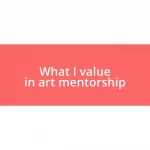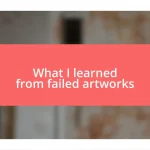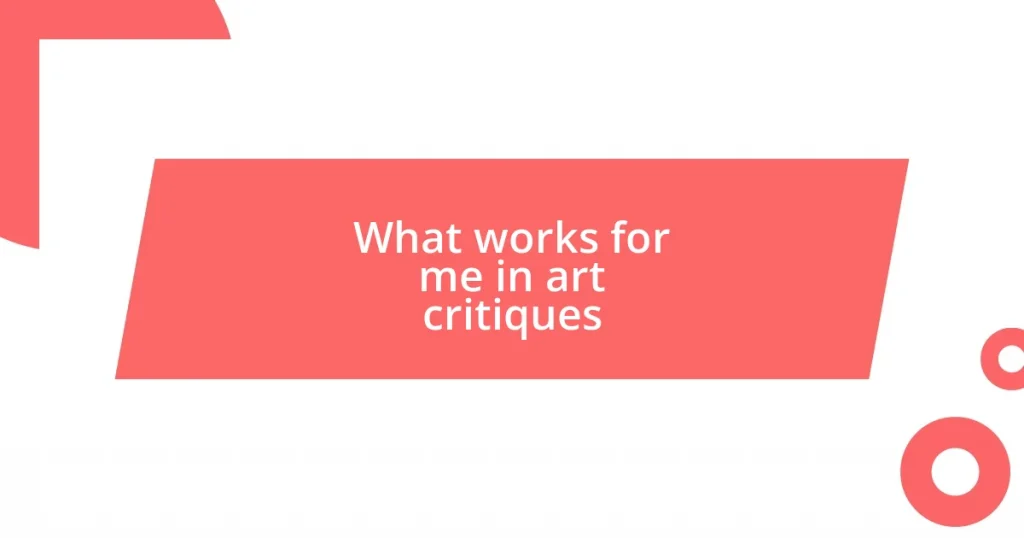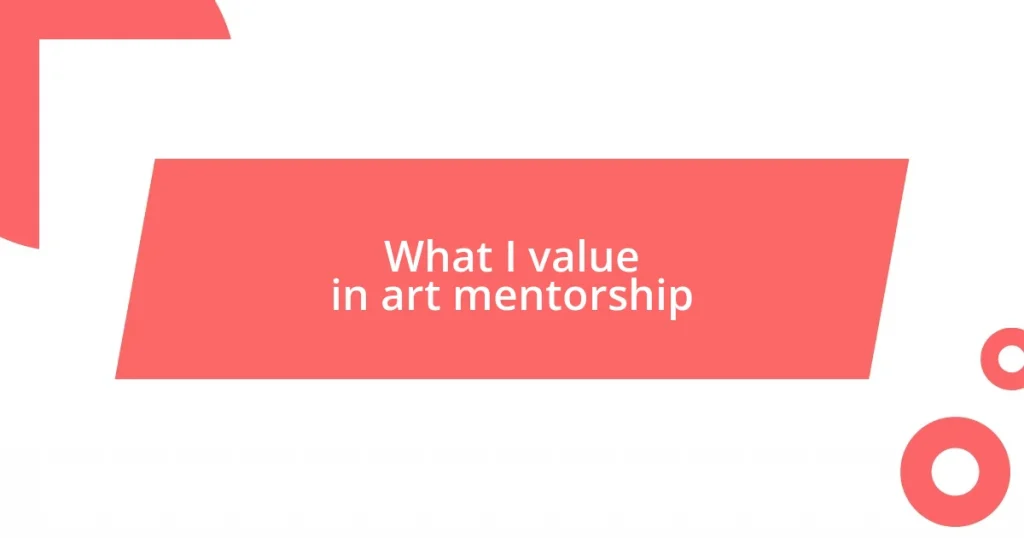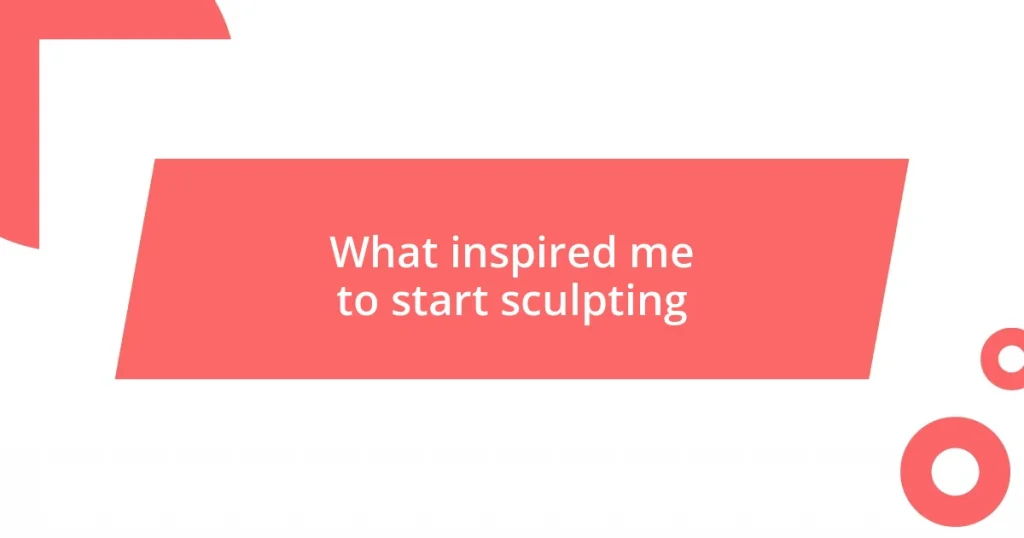Key takeaways:
- Digital art platforms like Etsy, DeviantArt, ArtStation, and Saatchi Art offer unique benefits catering to different artist needs, from sales to community engagement.
- Choosing a platform involves considering user experience, community interactions, and monetization options, which can significantly impact an artist’s growth and career.
- Effective monetization strategies include appropriate pricing, social media promotion, and diversifying income sources through various art-related offerings.
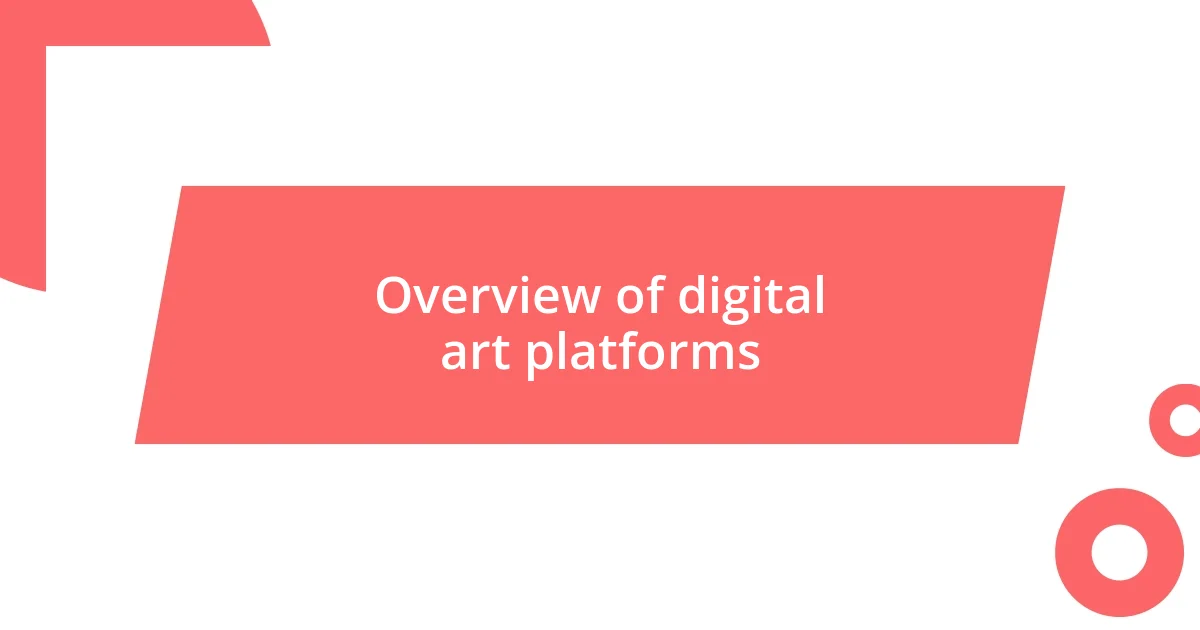
Overview of digital art platforms
Digital art platforms have revolutionized how artists create, share, and sell their work. From my experience, platforms like Etsy and Saatchi Art provide a space for both established and emerging artists to connect with their audience. It’s fascinating to see how a single digital platform can bridge the gap between a creator in a small town and collectors around the globe.
One platform that’s really caught my attention is DeviantArt. It’s remarkable how it fosters a community where artists and art lovers can interact directly. I remember sharing my first digital painting there and receiving feedback from people worldwide; that moment was both exhilarating and nerve-wracking. How many artists can say they’ve experienced such instant, constructive conversations about their work?
Furthermore, platforms like ArtStation focus heavily on professionals in the gaming and entertainment industry, showcasing the high-level skills of digital artists. Personally, I love browsing through the gallery to find inspiration or simply to appreciate the talent out there. Isn’t it incredible that digital art can now be a career path for many, thanks to these platforms?
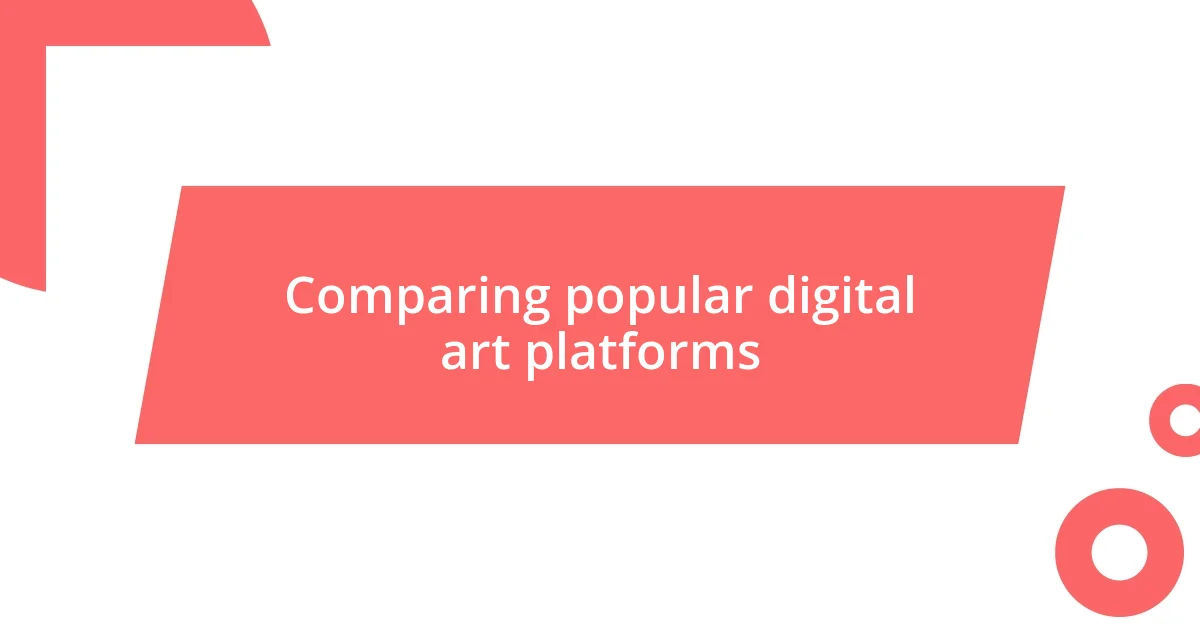
Comparing popular digital art platforms
When I compare popular digital art platforms, I see distinct differences in audience and functionality. For instance, while Etsy offers a strong marketplace for handmade and unique items, it may not be the go-to for artists looking for professional feedback or networking. I recall posting my work on both Etsy and ArtStation; while I had some sales on Etsy, the community engagement and constructive critique I received on ArtStation were invaluable for my growth as an artist.
Here’s a brief comparison highlighting some of the key features of these platforms:
- Etsy: Focuses on selling original and handmade art; great for emerging artists looking to monetize their work.
- DeviantArt: Community-driven, ideal for feedback and connections; perfect for fan art and personal projects.
- ArtStation: Tailored for professionals in gaming and entertainment; perfect for showcasing portfolios to potential employers.
- Saatchi Art: An online gallery for selling artwork; emphasizes high-quality pieces and artist promotion to collectors.
Each platform caters to different needs, and I find that experimenting with them can lead to unique opportunities and experiences.
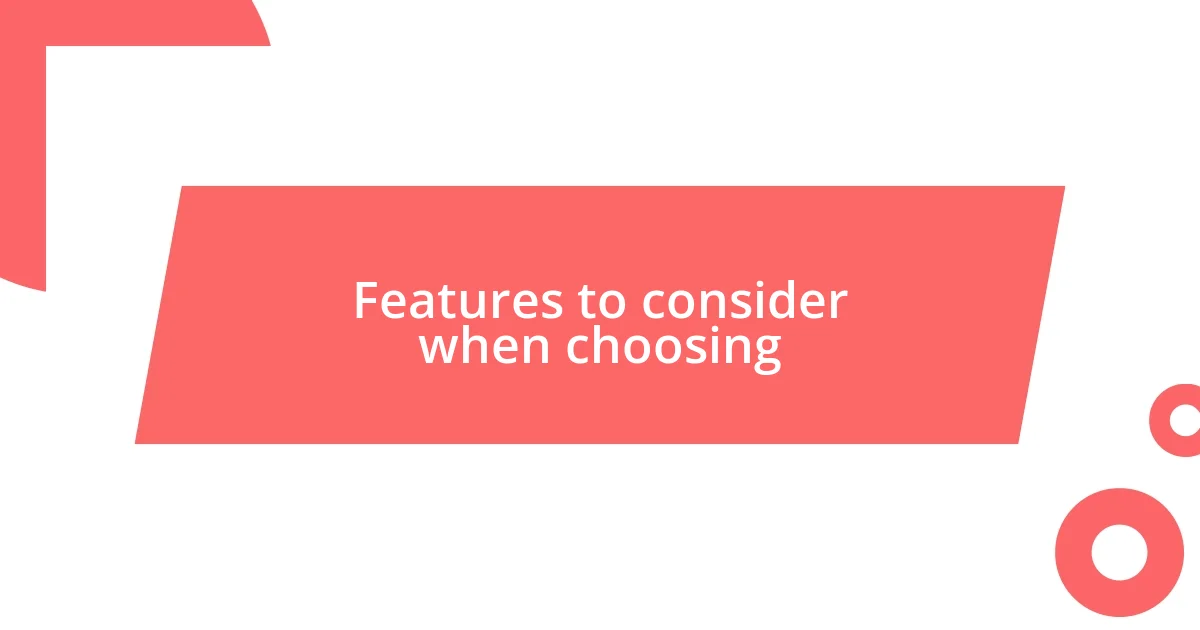
Features to consider when choosing
When selecting a digital art platform, user interface and experience stand out as critical features to consider. I’ve navigated numerous platforms, and a clean, intuitive design can make a big difference. For instance, I recall my initial experiences with ArtStation; the ease of uploading my works and organizing my portfolio was refreshing, allowing me to focus more on creating rather than struggling with technical challenges.
Another essential factor is the community and networking opportunities available on these platforms. Having a space where you can interact with fellow artists can ignite inspiration. I remember when I connected with a fellow illustrator through a mutual appreciation of each other’s work on DeviantArt. That collaboration ended up being one of my favorite projects, and it wouldn’t have happened without that supportive environment.
Lastly, think about the monetization options provided by each platform. Some like Etsy focus heavily on sales, offering features aimed at selling directly to customers. Others may allow tipping or subscriptions, catering to different artist needs. I once dabbled with Patreon, where the ability to receive ongoing support from fans helped me invest more time into my art. It’s fascinating how the right platform can not only showcase your talent but also transform your artistic journey into a sustainable career.
| Feature | Etsy | DeviantArt | ArtStation | Saatchi Art |
|---|---|---|---|---|
| User Interface | User-friendly for sales | Socially interactive | Visually appealing | Gallery-oriented |
| Community | Focused on sellers | Strong feedback loop | Professional networking | Collector connections |
| Monetization | Direct sales | Premium membership options | Portfolio exposure | Sales commissions |
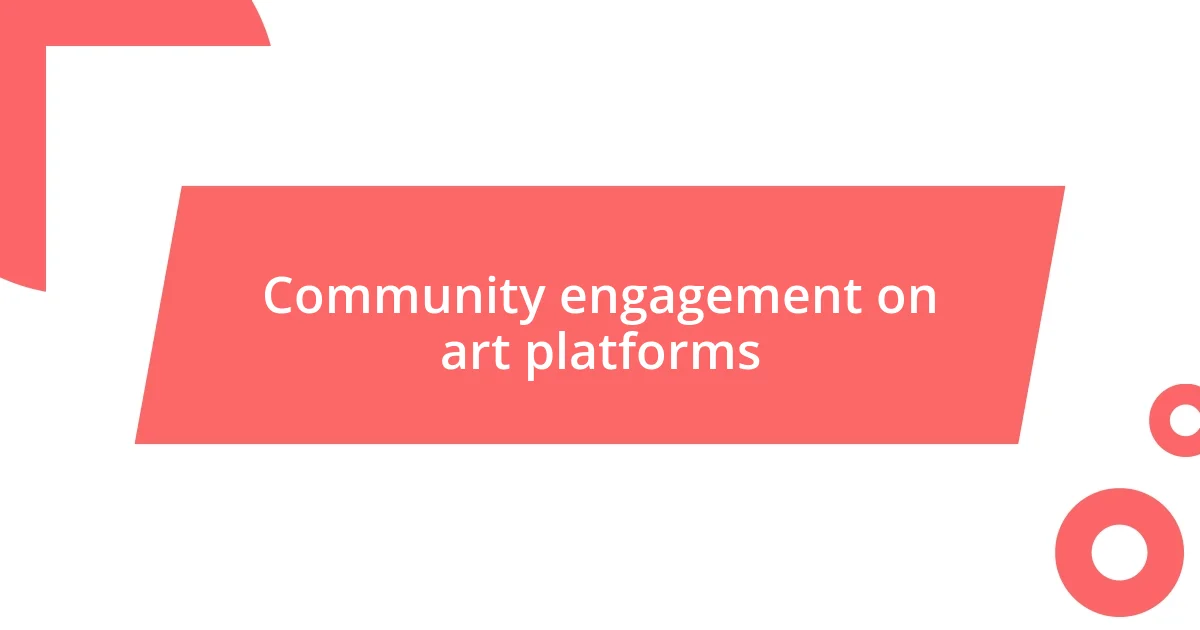
Community engagement on art platforms
Engaging with the community on digital art platforms has become a vital part of the artistic experience. I remember joining a group discussion on DeviantArt that exposed me to various perspectives. Listening to seasoned artists share their journeys not only motivated me but also sparked my creativity. Isn’t it incredible how a single conversation can shift your artistic direction?
On ArtStation, I was pleasantly surprised by how supportive the community was during my first major project. Artists were eager to provide constructive feedback, and it truly felt like a safe space to share vulnerabilities. The encouragement I received pushed me to refine my skills and take risks in my work. Have you ever felt the rush of inspiration from simply connecting with others who understand your passions?
Lastly, I’ve witnessed how participating in challenges on platforms like DeviantArt fosters camaraderie among artists. Collaborating with others on themed projects can lead to lasting friendships. It reminds me that art isn’t just about individual expression; it’s also about connection. I can’t help but wonder—how much richer would our artistic journeys be if we embraced this community aspect even more?
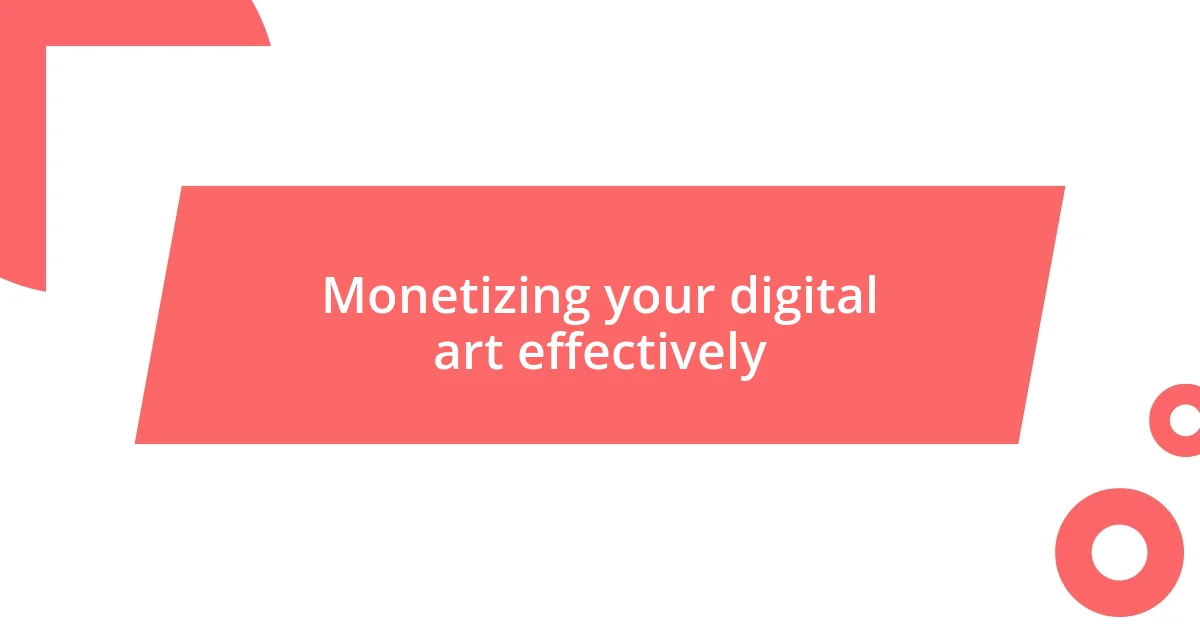
Monetizing your digital art effectively
Finding the right strategy to monetize your digital art can be a game changer. I often think back to when I first started selling my work online; I underestimated how important it was to price art effectively. By studying similar artists and understanding both my audience and market demand, I found a sweet spot that allowed me to value my work appropriately without undervaluing it.
In addition to pricing, promoting my art on social media was crucial. I’ve seen firsthand how sharing progress posts and behind-the-scenes content on platforms like Instagram helps build a loyal following. It’s fascinating to consider—how can a simple time-lapse video or a candid photo of my workspace create a connection with potential buyers? This blend of storytelling and visibility transformed my online presence, resulting in increased interest in my pieces.
Lastly, diversifying income sources has been vital for my art business. Exploring options like digital prints, merchandise, or offering commissioned work allowed me to tap into different markets. I experienced a lightbulb moment when I set up an online workshop; the excitement of teaching others brought in revenue while also deepening my connection to the art community. Have you thought about how branching out could not only enhance your income but also expand your creative reach?

